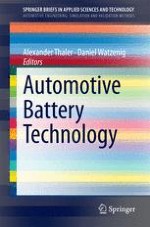
2014 | OriginalPaper | Buchkapitel
1. Holistic Safety Considerations for Automotive Battery Systems
verfasst von : Helmut Martin, Andrea Leitner, Bernhard Winkler
Erschienen in: Automotive Battery Technology
Aktivieren Sie unsere intelligente Suche, um passende Fachinhalte oder Patente zu finden.
Wählen Sie Textabschnitte aus um mit Künstlicher Intelligenz passenden Patente zu finden. powered by
Markieren Sie Textabschnitte, um KI-gestützt weitere passende Inhalte zu finden. powered by